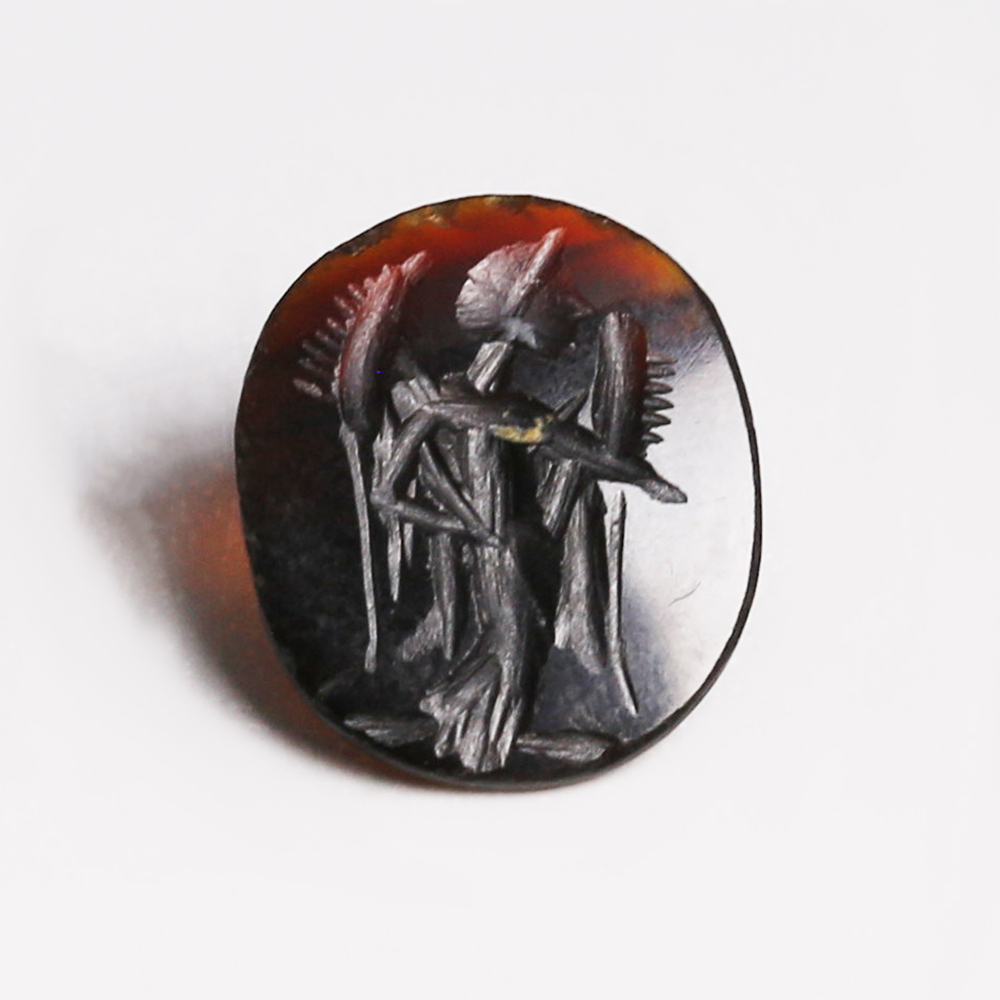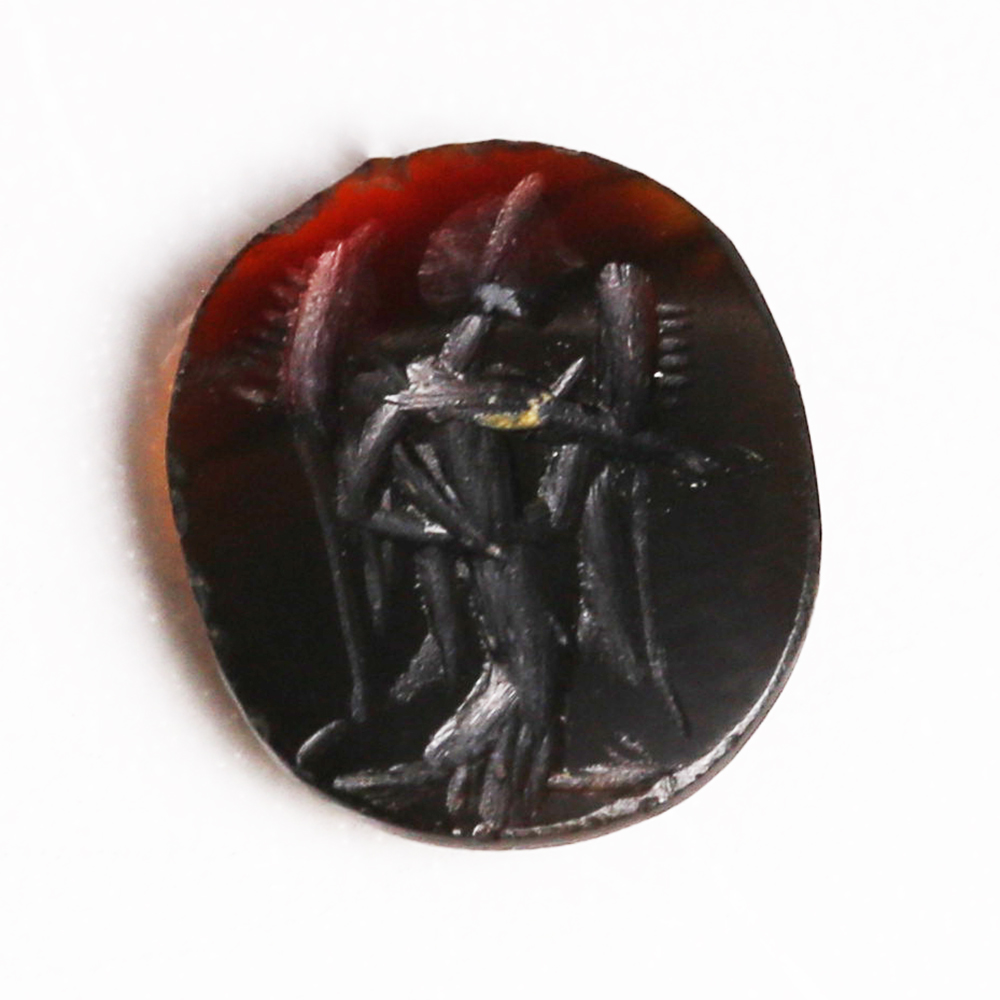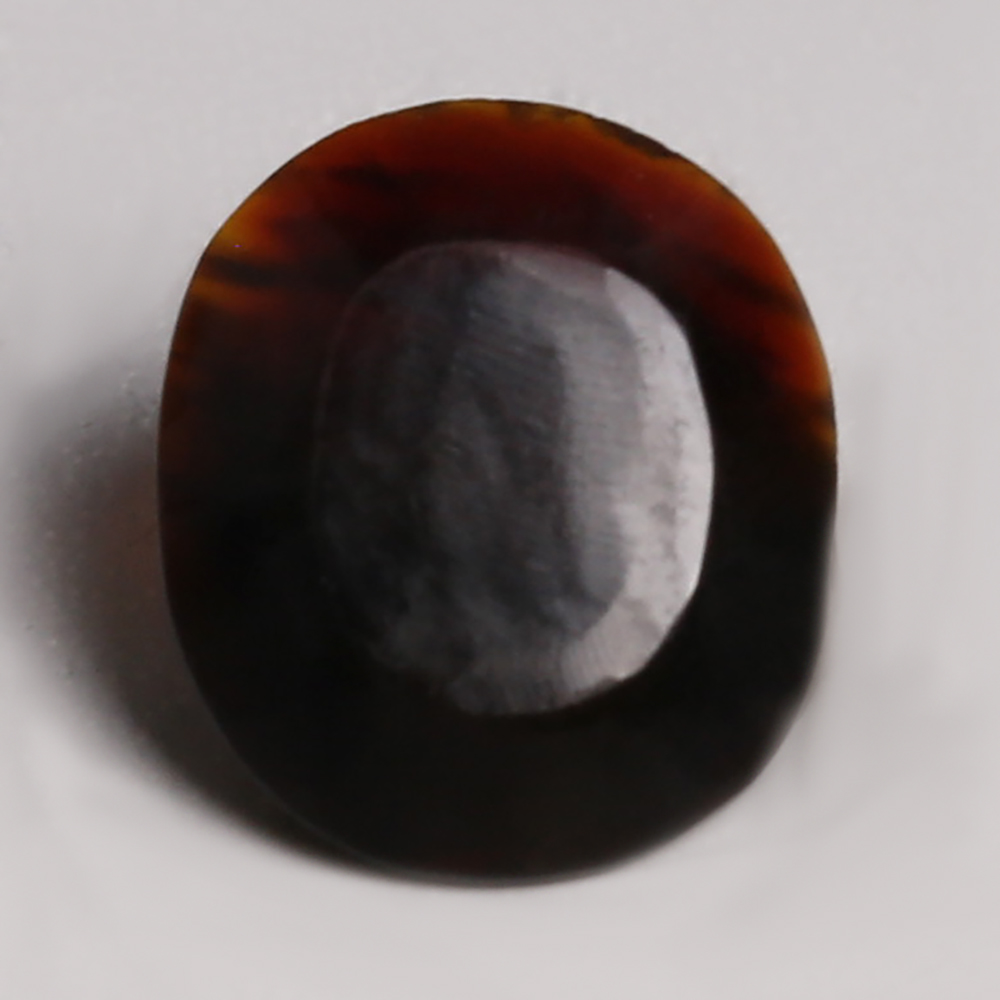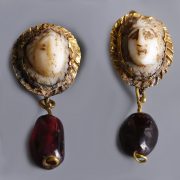The term intaglio refers to a small image that has been engraved into a gemstone and usually set in a piece of jewellery, most commonly a ring. Such artistic form has its origin in Sumer in the 4th millennium BC, with the appearance of cylinder and stamp seals, whereby decorations and patterns were engraved into soft stones. During the Hellenistic period and the early Roman Empire, the art of the intaglio reached its apogee, with there being a steady decline in craftsmanship in the late Imperial Rome, until a revival of interest with the Byzantine and during the Renaissance.
Ceres was the goddess of the harvest, fertility, motherhood and agriculture in general. Her Greek counterpart was the goddess Demeter. She is the only Roman agricultural god to be listed in the Dii Consentes, a list of the 12 gods of the Roman Pantheon. Just as Greek mythology includes Persephone as her daughter, the Romans attributed Proserpina as Cere’s daughter. Within origin mythology, both the ancient Greeks and Romans believed the abduction of Proserpina, by Hades, was the cause of the changing seasons. Whilst her daughter is missing, Ceres neglects her duties and brings forth a barren state, the beginning of winter when the ground mourns for Proserpina. As she emerges from her underworld prison, Ceres rejoices and the Earth awakens, bringing forth Spring.
To find out more about intaglios, please visit our relevant blog post: Engraved Gemstones in Ancient Rome.



